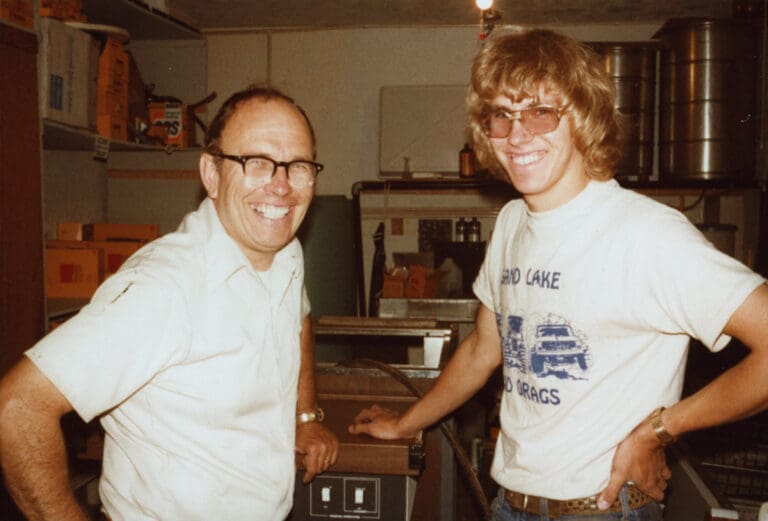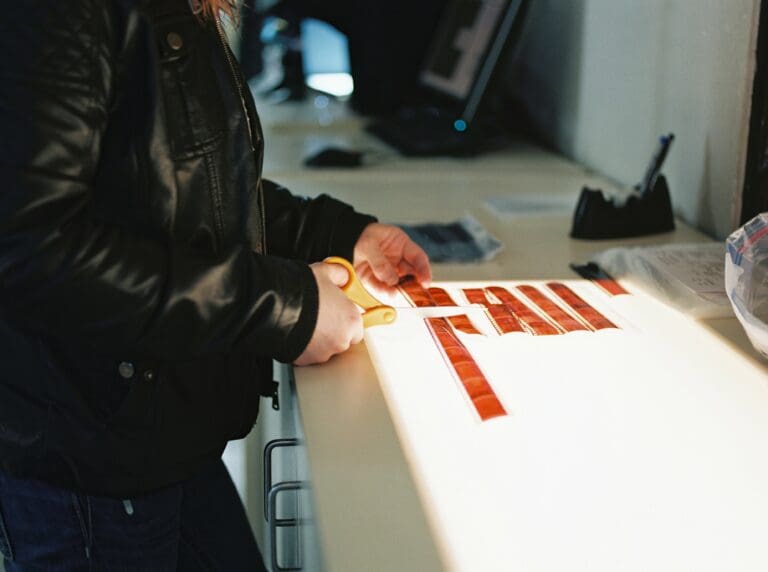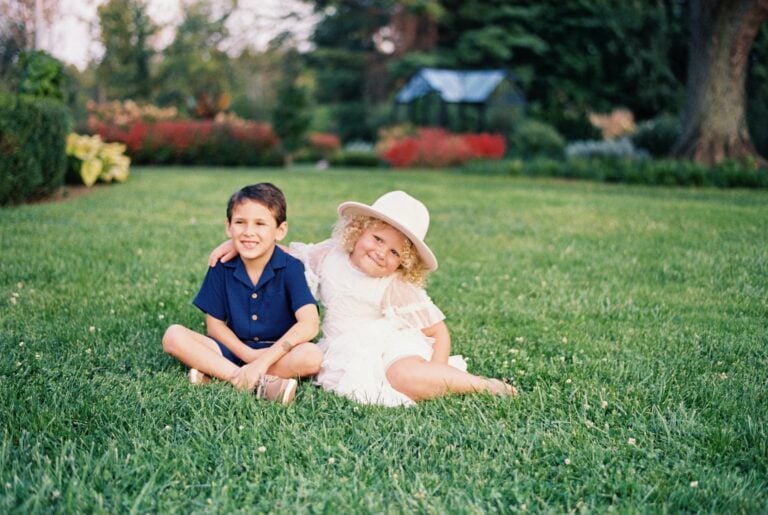We recently sat down with our friends over at Filmy Friends to geek out to film, share some advice for new film shooters and just generally have a good time!
Film might be old-school cool, but keeping it alive (and looking gorgeous) takes a whole lot of know-how, heart, and a dash of nerdy magic. Here at Photovision—a family-run lab in Salem, Oregon that’s been rolling strong since 1968.
What started as Howard and Donna Wood’s local photo lab has grown into a trusted partner for photographers worldwide. Whether you’re chasing moody landscapes, dreamy weddings, or anything in between, we want to serve you!
We don’t just develop film either! We educate, troubleshoot, and even show you how to hone in your color correcting skills!
Tell us about yourself! How did your lab get started? How long have you been in business? Where are you located?
Photovision was started by Howard and Donna Wood in 1968. Starting as a photo lab and quickly adding on a camera store, the Wood family has proudly served professional and amateur photographers in Salem, Oregon and worldwide for almost 60 years.
Currently, we are the third generation of Wood’s who develop film, and we are thrilled! We certainly didn’t know the legacy we started all those years ago!

What do you offer film photographers besides developing and scanning film?
We take care to communicate with our photographers to make sure they are getting the results they want, which often means Instagram messages, video calls, and extensive emails about the techniques and strategies that will lead to successful photos. Every customer has a profile with us, with their preferences listed and their reference photos attached.
While we specialize in developing and scanning for professional photographers, a lot of communication and education is happening behind the scenes to make it all happen. Our favorite example of this is The Game we developed to teach color theory to our film technicians. We ended up taking the game to Hybrid Co. and it was such a hit, it’s now turned into an educational tool on our website.
What size and resolution options do you offer for scans?
We offer “normal” and “large” scans for signature orders. The “normal” scans are 2400×3600 for 35mm and 2700×3600 for 645, plenty big enough to print 24×36″ or 27×36″. If you ever need a larger scan of just one image, we can always rescan for you! When you develop film with us, we make sure you have options!
What kind of style are you known for in the industry? (Light and airy, crisp and clean, etc. This will hopefully connect our readers to the right lab choice!)
We have photographers with styles across the board, from moody landscapes to bright bridal portraits and everything in between. We attach customer preferences to every account (at no extra charge), and we refer to those preferences every step of the way – from scanning all the way to the final check – to make sure we are achieving your vision, not ours.
If you are new to film or new to Photovision, let’s set up a call after your first order to review the results and make adjustments as needed! We haven’t yet mastered mind reading (we are so close though) so we need a bit of guidance from you to help us understand what look you’re going for. We see this as a partnership, and healthy partnerships require communication!

photo by The Hulls Photo and Video
What’s the best way to handle overexposed or underexposed film?
We recommend using an external light meter to really dial in the correct settings while shooting film. If you’re relying on the in-camera meter, you’re pointing at the subject – not at the light source.
An external light meter is used to read the specific point of space where the light is hitting your subject. This is the key to achieving consistent exposures! If your film is overexposed by a few stops, the colors won’t have shifted too much.
Film handles a little overexposure really well. Underexposure, on the other hand, will likely produce some color shifts that are difficult to account for in post-processing. When we are scanning underexposed film, we do our best to balance the color, but in some cases it is harder to match to your references.
Some of our photographers will use the “dehaze” slider in Lightroom to achieve more contrast, and split toning can be used to correct for color shifts that are different in the highlights and shadows. If you haven’t played The Game yet, check it out and use it as a tool to learn just how we correct for each color.

What’s the best way for photographers to provide feedback or request adjustments?
If you’d like some in-depth help, schedule a call with Stephen! He will walk you through any troubleshooting, from understanding your contact sheet to using a light meter.
If you just have a quick question, reach out via email or instagram! If you haven’t updated your reference photos in awhile, now is the time! Send us an email. We love hearing from you, so please don’t be shy.
We don’t just love to develop film, we love developing relationships with our customers too! If you’ve met us in person, you know how much we love to talk shop 🙂
Do you have any advice for photographers who are new to shooting film?
Get out there and shoot a test roll! Learn the exposure triangle and get familiar with your light meter.
Film photography doesn’t need to be mysterious! You can measure the light precisely and accurately with a light meter, and if you understand how the light is reflecting on your subject, you can probably envision the end result.
You’ll make huge strides more quickly if you leave your digital camera at home, allowing you to completely focus (pun intended) on gaining confidence with your film camera. Then, when you develop film with us, we can give you custom guidance and tips!
What is a common question that film users call in about when troubleshooting their film?
We are still hearing from photographers that are surprised by how muted/faded their expired Fuji is looking!
Keep in mind that even if the expiration date was only a year or two ago, it may have actually been manufactured years before that. Storing your film in the fridge can slow down aging, but it doesn’t stop gamma rays completely.
Expired film can produce similar colors as underexposed film, even if it is properly exposed. We recommend never using expired film for paid jobs. Though we do see ourselves as film experts when you develop film with us, we are still limited to the laws of chemistry.

photo by Shanell Bark
What is something you wish film users would understand during this process?
We really do want to hear from you! We want you to be happy with your scans. A good scan order should need just a few tweaks here and there to polish it off before sending to the client. If you are making a lot of changes, give us a call and let’s chat. We love to develop film, but we love to support you even more!
What is the most common mistake you see while processing orders?
Sometimes people forget to change their settings while going from indoors to outdoors or forget to turn on their flash inside. When using flash, keep the sync speed in mind (usually 1/90 to 1/200) to avoid having half the image come out black. Make sure to keep your exposed rolls completely separate from fresh rolls to avoid double exposing a roll unintentionally!
We’ve noticed when we develop film, people overexposing Kodak more than it should be. It’s a habit carried over from the Fuji days! Kodak does really well shot close to box speed or overexposed a little. Even if you want your scans to be light, we don’t recommend overexposing by more than 1-2 stops.
With that shift from Fuji to Kodak in mind, some photographers’ styles have shifted but they haven’t updated their reference photos! We have your references pulled up throughout all the steps of working on your film, so please make sure they reflect your current style.
TL:DR (we know you're busy)
We love being your cheerleader, friend and advisor when it comes to all things film. We email you, hop on calls, DM you on Instagram, and even just geek out with you about film so you can create the vision you see in your head.
After nearly 60 years in the game, we still believe that film photography is thriving, evolving, and honestly, it’s cooler than ever! Whether you’re loading your very first roll or sending off your hundredth, Photovision’s got your back (and your highlights, shadows, and mid-tones).
